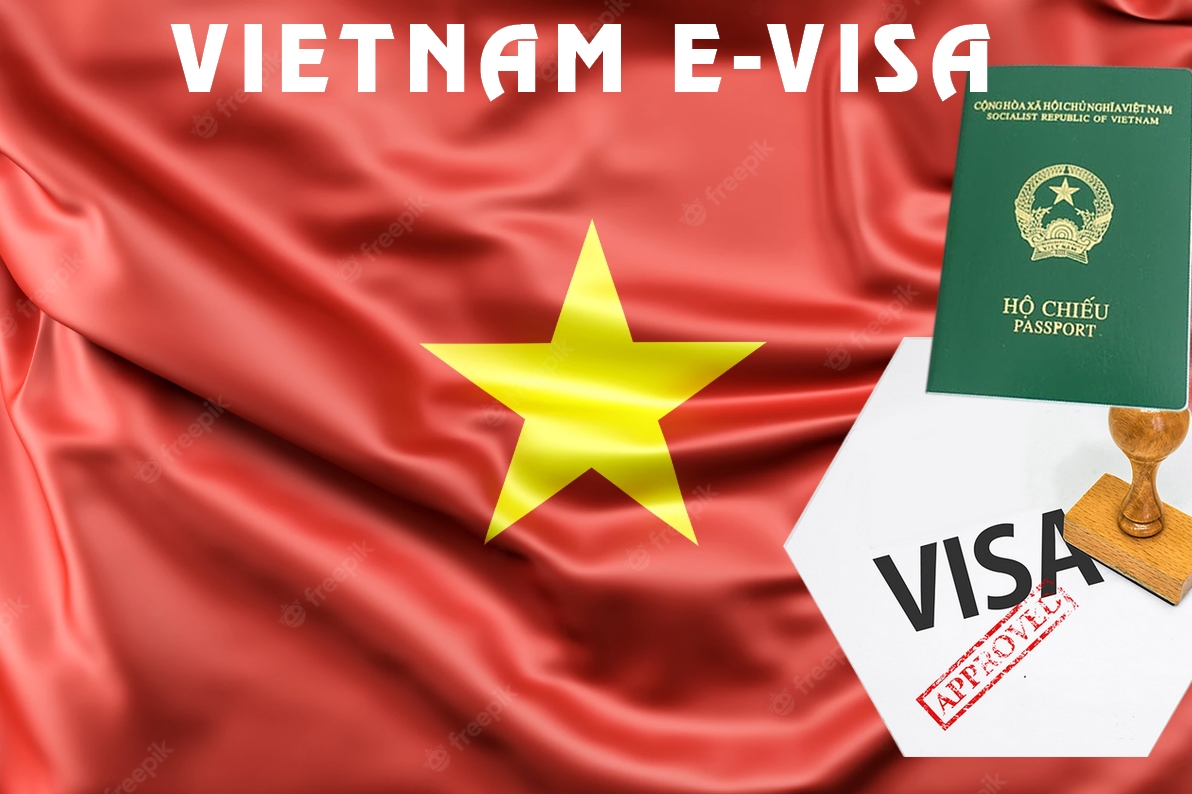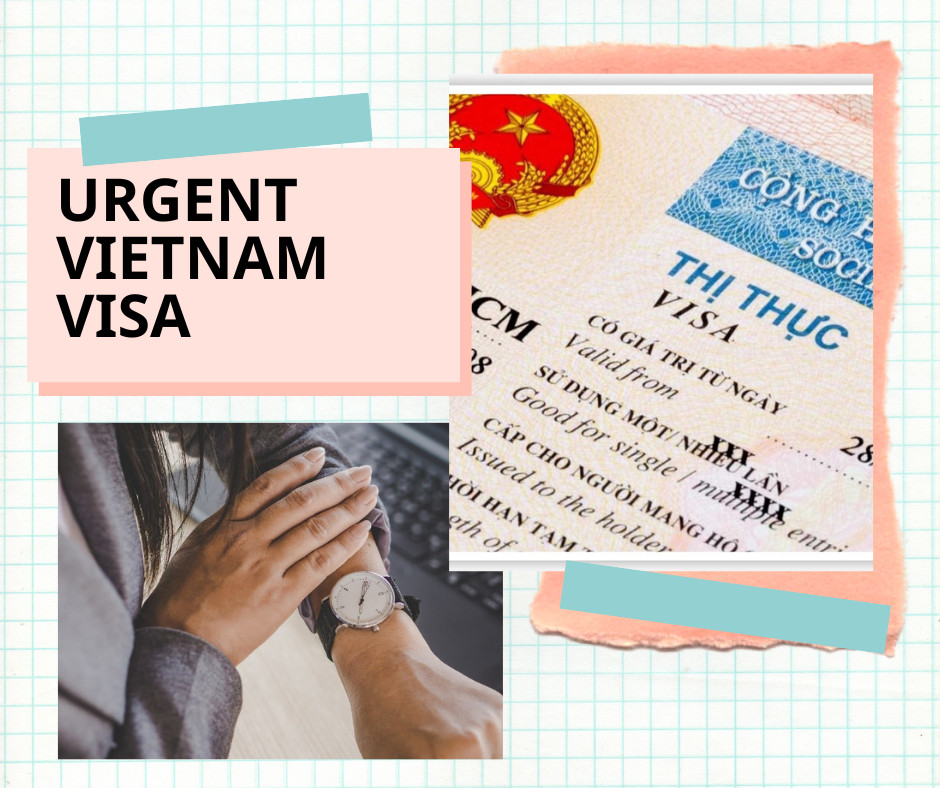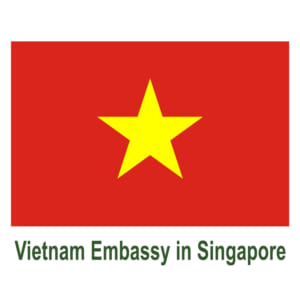
🇻🇳 Vietnam E-Visa Application Process – Step-by-Step Guide (2025)
Vietnam’s E-visa system allows citizens of over 80 countries to apply for a visa entirely online without visiting an embassy or consulate.
Here’s a comprehensive and updated guide to the Vietnam E-visa application process (2025)—perfect for travelers looking for a quick, convenient, and fully online way to get their visa:
✅ 1. Check Your Eligibility
Before applying, make sure your nationality is eligible for the Vietnam e-Visa. Citizens from countries like the USA, UK, Australia, Canada, France, India, Singapore, and most EU nations can apply.
🔗 You can verify updated eligible countries here
📌 Notes:
- Validity: Vietnam E-visas are valid for up to 90 days, single or multiple entry
- Extension: E-visas cannot be extended online. Contact a local immigration office or travel agent in Vietnam if needed
- You must enter and exit at the checkpoints listed in your application

🛂 Step-by-Step Guide to Apply for a Vietnam E-Visa Online (2025)
✅ Step 1: Prepare Required Documents
Before starting the application, prepare:
- A passport valid for at least 6 months from the date of entry, with 2 blank pages.
- A passport-size photo (JPEG/PNG file – white background, no glasses).
- A scanned copy of the passport bio page (JPEG/PNG file).
- A valid email address to receive the visa result.
- A credit/debit card (Visa/MasterCard/JCB/AMEX) for payment.
✅ Step 2: Access the Official Website
Go to the official Vietnam e-visa portal:
⚠️ Beware of third-party websites. This is the only government-approved site for e-visa.
✅ Step 3: Fill Out the Application Form
Click on “E-visa for foreigners” and then “Fill out the form”. Provide:
- Full name (as on passport)
- Date of birth, gender, and nationality
- Passport number, issue and expiry date
- Expected date of entry and exit
- Entry and exit checkpoint (choose from 33 designated ports)
- Purpose of visit (e.g., tourism, business)
- Upload the passport photo and passport bio page scan
✅ Double-check all details carefully.
✅ Step 4: Pay the E-Visa Fee
- Pay the non-refundable fee:
- $25 USD for single-entry (30 days)
- $50 USD for multiple-entry (90 days)
- Make payment via credit or debit card.
📌 Save the registration code after payment – you’ll need it to check your visa status.
✅ Step 5: Wait for Processing
- Standard processing time: 3 working days
- You will receive an email when your visa is ready (check spam folder too)
- During busy periods or holidays, processing may take longer.
✅ Step 6: Download and Print Your E-Visa
- Use your registration code, email, and date of birth to check status on the same portal.
- Once approved, download your E-visa PDF and print it out.
✅ Step 7: Present at Border Checkpoint
When arriving in Vietnam:
- Present:
- Printed Vietnam E-Visa
- Valid passport
- Show return/onward flight ticket (sometimes requested)
- Entry allowed at any of the 33 official E-Visa entry ports
Need Help with Application?
Let VisaOnlineVietnam assist you — we provide:
- Urgent & weekend visa services
- Professional error-free applications
- Support in multiple languages

🇻🇳 Vietnam E-Visa Fees and Payment Guide (2025)
💵 1. Standard E-Visa Fees
As per the Vietnam Immigration Department’s official update:
- Single-entry E-Visa (valid for 30 days):
25 USD (non-refundable, regardless of the result) - Multiple-entry E-Visa (valid for 90 days):
50 USD (non-refundable)
💳 2. Accepted Payment Methods
E-Visa payments must be made online at the time of submission. Accepted payment cards include:
- ✅ Visa
- ✅ MasterCard
- ✅ JCB
- ✅ American Express
- ✅ UnionPay (on some platforms)
💡 Note: Some banks may charge a small foreign transaction fee depending on your card issuer.
🧾 3. Payment Tips & Reminders
- Payment is made after completing the online application form.
- Keep your transaction receipt or confirmation number – it’s useful for tracking your application.
- No refunds will be issued if your application is denied or you make a mistake, so double-check your details before submitting.
⚠️ 4. Extra Costs (If Using a Visa Agency like VisaOnlineVietnam)
Using a trusted agency like VisaOnlineVietnam.com offers extra services, including:
| Service Type | Processing Time | Agency Fee (USD) |
|---|---|---|
| Normal E-Visa | 3–5 working days | From $18 |
| Urgent E-Visa | 1–2 working days | From $35 |
| Emergency E-Visa | 4–8 working hours | From $79 |
| Weekend/Holiday E-Visa | Within the day (guaranteed) | From $99 |
🛂 Stamping Fee: Not required for E-visa. Just show your printed e-visa upon arrival.

⚠️ Vietnam E-Visa Mistakes to Avoid
Applying for a Vietnam E-Visa is generally simple, but even small mistakes can lead to delays, rejections, or entry issues. To help you get it right the first time, here’s a list of common Vietnam E-visa mistakes to avoid in 2025:
1. ❌ Wrong Passport Information
Double-check your passport number, full name, date of birth, and nationality. One typo can invalidate your visa.
✅ Tip: Match the details exactly as shown in your passport.
2. ❌ Uploading Incorrect or Blurry Photos
Many applicants submit:
- Photos not meeting the required size or background
- Blurry passport scans
- Selfies or low-resolution images
✅ Upload a clear, scanned copy of your passport bio page and a passport-style photo on a white background.
3. ❌ Entering the Wrong Entry Port
Your E-visa is only valid at the port of entry you selected. Choosing the wrong one may result in denial of entry.
✅ Choose your entry airport, land border, or seaport carefully. Check the list of 33 accepted ports.
4. ❌ Applying Too Late
E-visa processing takes about 3–5 working days (excluding weekends & Vietnamese holidays). Applying too close to your travel date is risky.
✅ Apply at least 7 days before departure, especially during peak season.
5. ❌ Ignoring Public Holidays
Vietnamese public holidays can delay processing times.
✅ Avoid applying near Tết (Lunar New Year) or other national holidays.
6. ❌ Using Unofficial Websites
Scammers often operate fake websites mimicking the official e-visa portal.
✅ Only apply via the official website: https://evisa.xuatnhapcanh.gov.vn or through trusted agencies like VisaOnlineVietnam.com.
7. ❌ Not Printing Out the E-Visa
Vietnam immigration officers may ask for a printed copy of your E-visa.
✅ Print at least one hard copy and keep a digital version on your phone.
8. ❌ Overstaying Your Visa
The Vietnam E-visa is valid for 30 days (single entry). Overstaying may lead to fines, blacklisting, or being denied future visas.
✅ Plan your exit accordingly, or apply for an extension in advance.
9. ❌ Applying with a Damaged or Expiring Passport
Your passport must be valid for at least 6 months beyond your arrival date.
✅ Renew your passport before applying if it’s close to expiry or damaged.
10. ❌ Forgetting to Check Application Status
Some users submit their application and forget to follow up.
✅ Use your application code and email to check status on the official portal.
🇻🇳 Frequently Asked Questions (FAQs) About the Vietnam E-Visa Application Process
1. What is a Vietnam E-Visa?
A Vietnam E-Visa is an electronic visa issued by the Vietnam Immigration Department that allows foreign nationals to enter Vietnam for tourism, business, or transit purposes. It’s valid for 30 or 90 days and can be single or multiple entry.
2. Who is eligible for the Vietnam E-Visa?
As of 2025, citizens from over 80 countries are eligible for a Vietnam E-Visa.
3. What are the requirements to apply for an E-Visa?
- A passport valid for at least 6 months beyond the entry date
- A digital passport photo (white background)
- A scanned copy of your passport’s bio page
- A valid email address
- A credit/debit card for the visa fee payment
4. How do I apply for a Vietnam E-Visa?
You can apply online via:
- The official portal or through VisaOnlineVietnam.com for fast-track, urgent, and guaranteed support.
Steps:
- Fill out the application form
- Upload required documents
- Pay the visa fee
- Wait for approval and download your E-Visa
5. How long does it take to process the E-Visa?
- Standard: 3–5 working days
- Urgent: 1–2 working days
- Emergency: As fast as 4 hours with services like VisaOnlineVietnam.
6. Can I apply for a multiple-entry E-Visa?
Yes. From August 15, 2023, Vietnam offers multiple-entry E-Visas valid for up to 90 days.
7. Where can I enter and exit Vietnam with an E-Visa?
E-Visa holders can enter/exit at 33 official ports, including:
- International airports: Hanoi (Noi Bai), Ho Chi Minh City (Tan Son Nhat), Da Nang, Cam Ranh, Phu Quoc
- Land and seaports (full list available online)
8. Can I extend my E-Visa in Vietnam?
Yes, but it must be done through a licensed agency or the Immigration Department. Extension approval depends on your visa type and purpose of stay.
9. What happens if my E-Visa is denied?
You will receive an email notification. If you apply via VisaOnlineVietnam, they will help you reapply or refund according to their policy.
10. Do I need to print my E-Visa?
Yes. Always print a copy of your E-Visa and carry it with your passport. You will need to show it at the immigration checkpoint upon arrival.
Need Help?
Use our expert support at VisaOnlineVietnam for 24/7 visa assistance:
- 🌐 https://visaonlinevietnam.com
- 📧 Email: [email protected]
- 📞 WhatsApp: (+84) 968 18 77 18
- 📞 USA Hotline: +1 (972)-666-0676.


